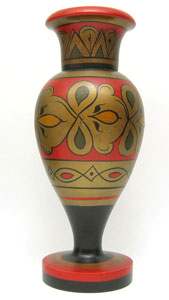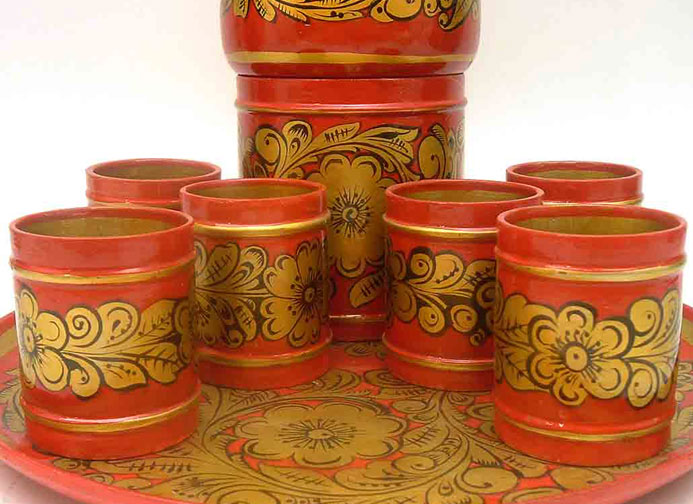The Art of Khokhloma
Posted by The Russian Gift Shop on May 10th 2015
In the 17th century, artisans who made wooden household and kitchen utensils used to gather at the big fair held in the trade village of Khokhloma, Semenovsky district and not far from Nizhniy Novgorod. This was an old town on the Volga river, where wares were sold. The area was known for significant Old Believer monasteries, such as the Sharpansky and Olenevsky sketes. In time, these utensils, richly painted in bright colors against a black or gold background, were called by the name of the village in which they were sold. With the aid of only four colors, - red, black, green and golden yellow - these modest Russian household objects became works of art. Typical Khokhloma ornamental motifs of painting are grassy patterns, such as ornate blades of grass, small spikelets, berries, peas and fruits inscribed in openwork interweaving, drawing under a leaf or under a berry, and smooth forms of leaves and berries made with wide strokes.
The 1930's were the Golden Age for classical Khokhloma production. Master craftsmen came together in co-operative associations and formed artels. "Export" artels also organized and produced complex and specialized forms and paintings, intended for sale abroad. At the same time, products were made especially for museum and exhibition expositions.

Antique Khokhloma Vase. An antique vase decorated in geometric patterns and simple circular florets. Circa 1920. "MADE IN RUSSIA" in silver on the bottom.
To produce a piece of Khokhloma, soft wood, usually linden, is carved into pieces that are decorated and sealed with a specially-prepared compound. The pieces are polished and coated with several layers of drying oil. After being processed in a kiln or oven, they are again coated, this time with powdered aluminum mixed with linseed oil. In olden times (no longer) tin or silver was used.
The designs are improvised and never copied from preliminary sketches. This gives each pattern its individuality. When the painting is finished, the pieces are lacquered twice and again subjected to heat. At this point, the aluminum powder acquires the golden colors that is the Khokhloma trademark. The pattern is so completely fused with the wood that the lacquer never peels off, not even in boiling water. Since few paints can withstand heat processing, cinnabar is used for red and soot for black.
The sources of the art of Khokhloma date back to antiquity, but the complex technology and diverse styles used today originated in the 17th century. For hundreds of years Khokhloma painting has amazed the world. The secrets of this art have been passed down from father to son for generations.

